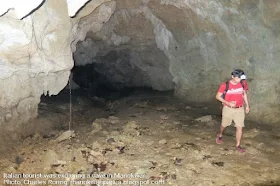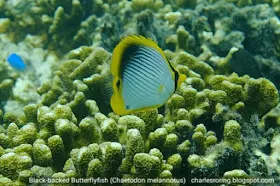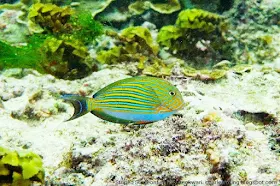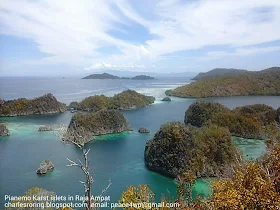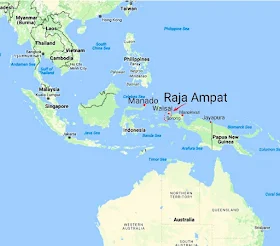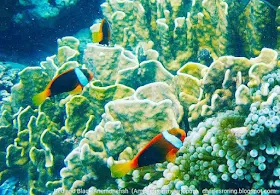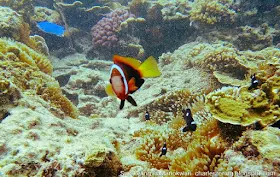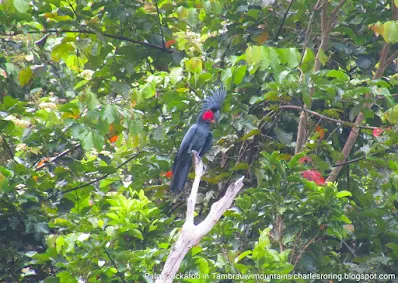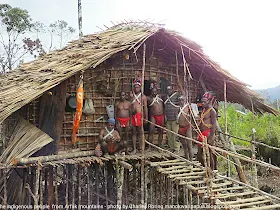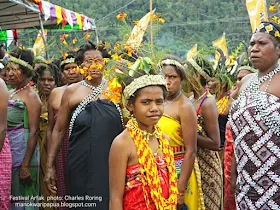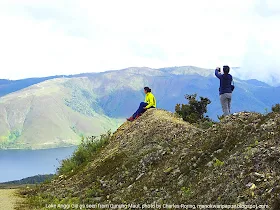Waigeo island of Raja Ampat is a great place to watch parrots. I have organized numerous trips to the island for birdwatchers or nature lovers who want to see parrots and other birds. We usually explore the forest on foot in the mornings and in the afternoons. There are several places that I visit with tourists to enjoy birdwatching. Some of them include Warduwer beach, Yengkawe forest, Fish Lagoon and Sopen forests. All of them are located in Waigeo. In the forest south of Waigeo, I saw Red-cheeked Parrot, Eclectus Parrot, as well as Violet-necked Lory, Sulphur-crested Cockatoo, and Palm Cockatoo. There was a wooden platform on the hill where tourists can sit in the mornings to enjoy the beautiful scenery of Kabui bay as well as watching parrots, starlings, kingfishers and paradise birds. In the forest near the runway of the airport of Waisai, I saw Great-billed Parrot, and Coconut Lorikeet. They were very beautiful.
 |
| Palm Cockatoo |
The best site to watch Palm Cockatoo is Warduwer beach. This black feather bird likes to eat fruits in catappa tree. One afternoon, after enjoying snorkeling at the beach, I saw the Black-Palm Cockatoo landed on a small tree in front of me. I took out my camera to shoot him. Unfortunately, he flew away to a higher tree still in the nearby area. I walked slowly closer to the tree. It was a catappa tree. There were several Palm Cockatoos in the tree. Local people called them
Kakaktua Raja meaning literally King Cockatoo.
Eclectus Parrot are sexually dimorphic. The male has got green and red feather whereas the female one has got red, and blue feather with black beak. The eclectus parrot can be seen in most part of Raja Ampat. Female likes to wait in the nest of high ironwood tree. To watch parrots, birdwatchers need a good pair of binoculars such as the 10×42 mm Swarovski, Nikon or Leica binoculars. A camera with tele-photo lens is also good.
 |
| Eclectus Parrot |
In addition to parrots, visitors can watch a lot of tropical birds in Raja Ampat including Pied Imperial Pigeon, Puff-back Meliphaga, Hooded Butcherbird, Pinon Imperial Pigeon. Red Bird of Paradise, Wilson's Bird of Paradise, Hooded Butcherbird, Beach Kingfisher, Hooked Bill Kingfisher, Yellow-billed Kingfisher, Sacred Kingfisher, Papuan Blyth's Hornbill, and a lot more.
Field Guide
I use Birds of New Guinea as my reference in identifying birds. The Second Edition field guide book was written by Thane K. Pratt, Bruce Beehler and some other ornithologists.
Birding in the Karst islets of Raja Ampat
 |
| Karst islets in Raja Ampat |
There are several karst formations in Raja Ampat which tourists can visit to enjoy birding and wildlife watching. Some of them were Fish Lagoon, Piaynemo, Wayag and Kabui. Because of their remote locations, bird life in these karsts is relatively rich. Sulphur-crested Cockatoo, and Great-billed Parrot are the ones that I often see. Other birds that I saw in my previous trips were Spice Imperial Pigeon, Lemon-bellied White-eye, Hooded Butcherbird, White-breasted Woodswallow, Rainbow Bee-eater, and Striated Heron. Sea birds such as Pacific Swallow, Eastern Osprey, White-bellied Sea Eagle, starlings, lesser crested tern, Torresian Crow, and Lesser Frigatebird, can also be seen in the karst
Snorkeling
In addition to organizing birding trip, I also run snorkeling trips to Raja Ampat. Tourists who want to join the tours need to bring their own masks, snorkels and fins as well as underwater (action) camera such as Go Pro, Nikon W300. We will enjoy snorkeling over the coral reef of Waigeo, Gam, Mansuar, Kri, Friwen Wall, Arborek to see such fish as Grouper, Jackfish, Surgeonfish, Anemonefish, Parrotfish, and, etc.
Booking
If you are interested in taking a birdwatching, snorkeling and sightseeing tour in Raja Ampat and want me to organize your trip in the archipelago, please, contact me (Charles Roring) by email to: peace4wp@gmail.com or whatsapp: +6281332245180.
Also read:
Coastal Birds of Raja Ampat
Snorkeling and Birding in Waigeo island of Raja Ampat
Snorkeling and Sightseeing Tour in Raja Ampat
